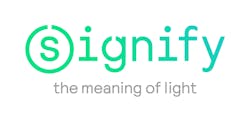In a world where building energy efficiency is increasingly prized, pursued and rewarded, it’s no surprise that it’s also becoming not only expected, but mandated.
Energy-related codes and standards developed by entities committed to setting a high, but attainable bar for efficiency in new and refurbished structures are gaining more visibility and buy-in from jurisdictions that oversee and regulate development.
From the ASHRAE/IES 90.1 building energy standard to ICC’s International Energy Conservation Code (IECC) to California’s Title 24 Energy Code, needlessly wasted energy in buildings is in the crosshairs, becoming less tolerable with each revision cycle. They all continue to raise the performance bar, reflecting heightened interest in environmental stewardship and operational cost savings, as well as technology advancements.
Over time, many states have incorporated these energy standards and codes into their building codes. But most have been slow to regularly adopt updated versions, resulting in a patchwork of codes of varying rigor. But the pace and breadth of modernization could begin to pick up in the wake of the U.S. Department of Energy’s decision last year to anoint the 2016 version of ASHRAE 90-.1 – ASHRAE/IES 90.1-2016 – as the national energy reference standard, and to require state building codes to incorporate it, or an equivalent standard such as the 2018 IECC, by February 2020.
Then, presumably, many state building codes will become more demanding in terms of how structures are designed and built from an energy efficiency perspective. Building designs will have to advance to the next level, incorporating upgraded materials, architecture, mechanical equipment and other components of the infrastructure that together reduce structures’ energy footprint.
And a prime focus will continue to be building lighting, a big energy user that has drawn increasing amounts of attention in energy code revisions over time, especially as solid-state lighting technology has advanced and brought energy-saving LED lighting into the mainstream. More demanding energy codes, required to be reflected in more state building codes, translates to the near-inevitability of LED becoming the default lighting choice.
Lighting gets a wealth of attention for good reason: it’s one of the single largest contributors to a building’s energy load and overall electric grid demand. DOE estimates from 2016 put the annual energy consumption from the nation’s 7-billion installed lighting systems at about 5.5 million quads, or 15 percent of the nation’s total electricity usage.
Lighting, in other words, is low-hanging fruit ripe for the picking in energy savings pursuits. And it’s been made much more possible with the advent of solid-state lighting technologies. Advances in LED lighting that have improved performance and lowered costs of solutions have propelled adoption and yielded significant energy savings for users replacing traditional incandescent or fluorescent lighting. DOE says that installed LED lighting systems in the U.S, estimated to number 874 million in 2016, probably saved some 458 trillion BTUs of source energy.
Little wonder, then, that LED lighting is becoming a foundational element of energy codes and standards. While energy savings is still achievable with enhancements to legacy lighting system design and products, LEDs provide the most direct, though often not the cheapest up-front path to long-term savings on energy needed for lighting. As newer generations of building lighting efficiency targets are developed to reflect new technology and higher aims, LEDs are a primary means to an end.
“The 2019 version of ANSI/ASHRAE/IES Standard 90.1 has shifted to an all-LED baseline in developing the lighting power density values,” says Michael Myer, senior lighting researcher with DOE’s Pacific Northwest National Laboratory, which assists code-making bodies.
Noting that the newest Title 24 standard also is entirely LED-based, Myer says LED is developing a stronger foothold, and that that’s being reflected in code revisions.
“Specifiers, engineers and designers are all primarily specifying LED products,” he says. “Shipments of incandescent, fluorescent and HID lamps are all down significantly since 2011.”
Energy codes and standards aren’t the only building-design-guideline trends that bear watching from a lighting perspective. Those that address the building environment for occupants and users, such as the U.S. Green Building Council’s LEED standard and the International Well Building Institute’s WELL standard, promote user-friendly lighting systems as an element of occupant experience-focused design. They prioritize systems that are highly controllable from a light delivery, quality and intensity perspective and reflect growing knowledge of the effects that both poor-quality and high-quality light, broadly defined, can have on human beings.
LED lighting, increasingly offering capabilities for high-level control of elements such as dimming and color rendering, stands to become a cornerstone of building design projects that seek LEED and WELL certification. And LED is on track to have a central role in the emerging study of human-centric lighting (HCL), which posits that subtle, but controllable light qualities related to color and intensity affect human circadian rhythms that are linked to health and well-being. HCL is a concept that could find its way into future lighting designs, as well as next-generation building standards.
As knowledge of the impact that the built environment has on the human experience grows, the evolution of codes and standards that address it should be closely watched. And given the central role of lighting in that environment, lighting designers and contractors should pay extra close attention. Moreover, the place that LED lighting technology will have in reducing energy usage and improving occupant experience means they should be investing in greater understanding of LED options and the changing code and standard specifications that relate to LED technology.
One of the very best ways to keep moving in that direction is to cultivate relationships with established and leading LED lighting suppliers, companies that have a long history in lighting products and were there at the inception of LED technology.
Aligning with a company like Signify, maker of proven and time-tested Philips-branded LED products, brings exposure to a wide range of products capable of delivering the performance that evolving codes and standards demand. Monitoring trends in that area as they relate to lighting is an executive-level responsibility at Signify, reflective of the understanding that increasingly strict performance mandates for buildings could play an ever-bigger role in how lighting projects unfold. In that environment, partnering with suppliers that understand the nuances of compliance, and have the products and know-how to get the job done to specifications, can offer a key competitive advantage.
Sponsored by:

